Cold Chain Logistics: Management Challenges & Solutions
The supply chain is a term used to describe all the components required to transport goods from beginning to end, from production to the end...
9 min read
 BUKU Marketing
:
Nov 3, 2022 1:58:42 PM
BUKU Marketing
:
Nov 3, 2022 1:58:42 PM

Shopify is a wonderful platform that lets people easily create eCommerce websites, but…
… it may be a learning experience for most people.
Don’t be discoursed, though! Even seasoned Shopify masters are on the lookout for helpful information that can benefit their business every day.
An important point new and experienced Shopify users should keep in mind is how to reduce shipping costs on Shopify.
Getting traffic and monetizing on that traffic is important, but one should also keep an eye on how shipping costs can directly increase cart abandonment.
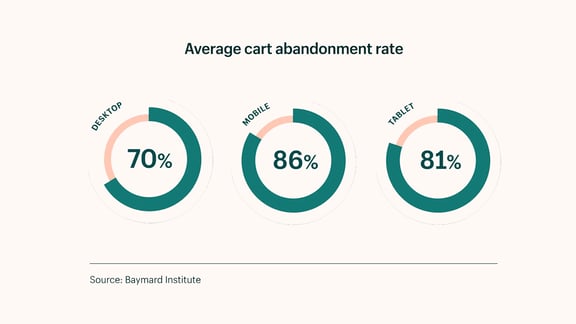
Of course, there are many reasons for cart abandonment, but high shipping costs and/or lack of transparent shipping options are undoubtedly a significant factor in this problem. Most consumers are not just looking at the list price of the product or products; they are also considering taxes, fees, shipping, and handling.
It is essential to reduce shipping costs on Shopify to lower your cart abandonment rate. Otherwise, all that effort you’re putting into driving the web traffic to your Shopify store will go to waste.
Key Point to Remember – Shipping fees can play a huge role in your Shopify store’s bottom line.
In this article, we’ll discuss the best strategies and technologies you should use to reduce shipping costs in your Shopify store, pass the savings onto your customers, and have better tracking and overall management of your company’s logistics.
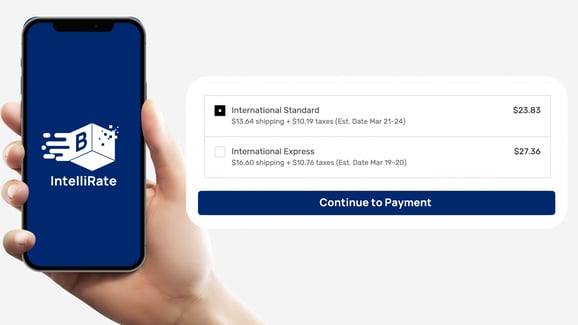
The quickest solution to reducing rising shipping costs on Shopify is BUKU's app, IntelliRate.
In many cases, the difference between a good Shopify store and a great one is the tools that they are using. IntelliRate not only gives you greater insight into the best prices for shipping, but it offers customers a seamless checkout experience.
Shipping can be an issue for many customers.
They are looking for an experience, much like prominent retailers like Amazon.
One of IntelliRate’s most significant selling points is that it gives your website checkout process an "Amazon-like" experience.
But why is this even important?
It's important because it gives the customers a sense of familiarity, which ultimately gives them the trust they need to purchase from your website. It is also a proven model that works. You don't want to overwhelm or underdeliver when it comes to shipping options. Following in Amazon's footsteps of 3-4 lanes, accurate delivery dates, and expedited options is a familiar and tested way of driving sales through checkout.
There are a lot of hassles that stop people from getting into the eCommerce world. Still, IntelliRate cuts through some more complex issues and streamlines the shipping process for all customers.
Besides offering customers a fantastic shopping cart experience, they offer bonuses for the Shopify businesses using their service.
For instance, they:
These benefits save business owners time, money, and stress and allow them to use their resources elsewhere.
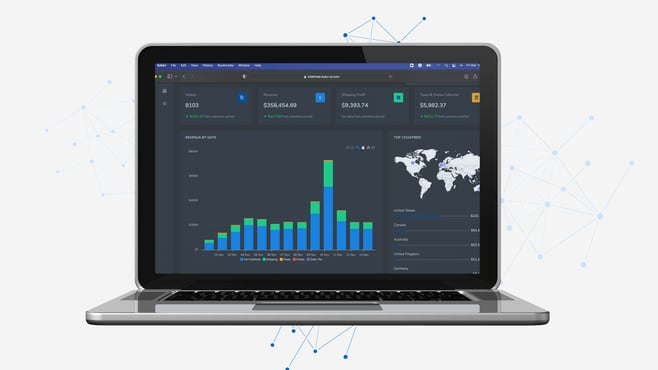
As an IntelliRate user, you will have access to shipping analytics, which will help you use AI and data to make predictions to help you run your business more successfully.
Also, did you know you can turn shipping into income instead of a business expense?
BUKU actually emphasizes helping Shopify store owners with shipping monetization, which is just amazing!
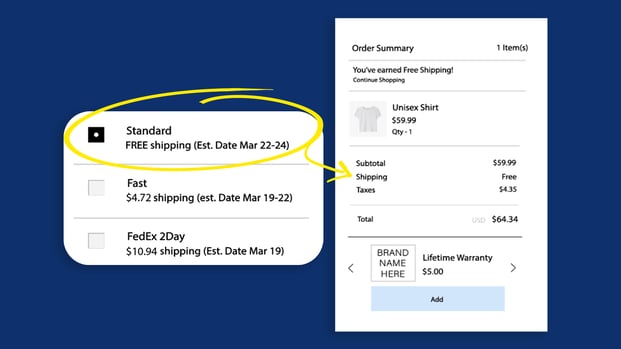
If you want to combat a high shopping cart abandonment rate, offering free shipping is a proven tactic.
However, it is essential to make sure you are doing this in such a way that you are not losing money yourself. You really need to determine how to reduce shipping costs on Shopify to bring in more customers and not lose any money yourself.
Here are some ideas on how to do just that:
The most common way, which many consider a mistake, is to offer free shipping and absorb the shipping cost. It seems like a good idea to do this, but the problem is that it will dramatically eat into your profits.
This could be a good loss leader for a little while, though. Offering free shipping at a loss to you may bring in many customers but give your brand recognition and help you establish a positive reputation. However, it is not a good idea in the long run.
Here are a few other ideas that might work out better for you:
When trying to determine different ways to reduce shipping costs on Shopify, it is a good idea to take a step back and learn about the various shipping options available.
There are many different types and speeds of shipping that customers look for – too many to count. It is always a good idea to offer multiple options to make your customers happy.
For example, Amazon’s fulfillment center offers a range of shipping for their customer, the option that most customers generally choose is two-day shipping. Two-day shipping has become standard for people who order through Amazon and most online retailers.
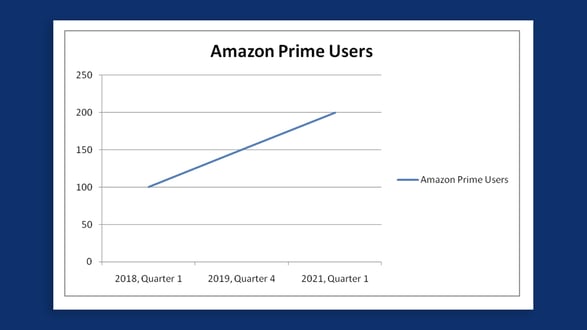
So, what other types of shipping are available? Here is a quick guide to shipping types:
Besides the type of shipping, what else might be necessary for your customers?
Fast shipping is usually the most important factor for customers. In fact, in 2019, a questionnaire about dealing with brands said that the speed of shipping was their most important concern. 62% of respondents ranked that at the top of the list.
The second biggest concern? Easy delivery process.
As you can see, fast, easy, intuitive deliveries are a high concern for all customers.
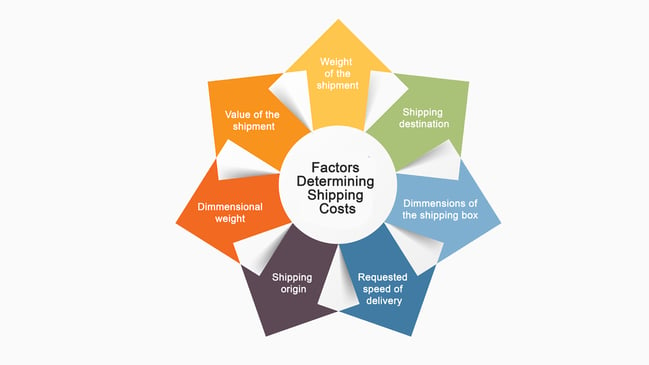
When you are setting up your Shopify store, you may notice that there are a lot of choices for shipping. It may feel challenging to reduce shipping costs on Shopify when the process seems complicated.
However, you might need to develop the right shipping cost structure to save costs for your business.
So, what shipping cost strategy is right for you and your business?
Let’s start by discussing different methods and how they can affect your costs.
Free Shipping: We have already touched on this. You could lose money by eating all of the cost, make money by adding a threshold, charging exact rates, or adding expedited options with margin.
Calculated Shipping Rate: This is a hands-off policy where the rate is out of your hands. However, many people will walk away and not purchase when the shipping is a high percentage of the total cost. To combat this concern, you can implement dynamic rate shopping to boost your confidence in calculating and displaying a low shipping price.
Fuel Surcharges: Fuel surcharges are a typical, yet least understood, expense that can mount up to a big expense for the Shopify store. They are the additional costs that couriers frequently charge for both domestic and international shipment, in order to cover any volatility in fuel prices.
In this way, even if fuel prices substantially increase, couriers continue to be lucrative. These fees, which many businesses occasionally forget, can frequently mount up quickly and raise shipping prices for online retailers.
Overhead Costs: For online retailers, delivery is often prohibitively expensive due to courier overhead charges. Truck drivers, staff at fulfillment centers, and others all have expenses related to pay, benefits, and the like. Online retailers ultimately pay more for shipping, as a result of these overhead expenses.
Variable Costs: Finally, a range of varying factors relating to how packages are shipped can have an impact on shipping prices for online retailers.
Dimensions, weight, value, and destination of the package have a considerable impact on transportation costs and can result in price increases for online retailers. This is particularly true for businesses that send out bulkier, heavier commodities, both domestically and abroad.
When setting up your Shopify store, it is simple to choose your rate methods and costs. However, it is essential to have a strategy going in. This is where Buku Intellirate steps in - to help reduce shipping costs on Shopify stores and allows the business owner to profit from the margins.
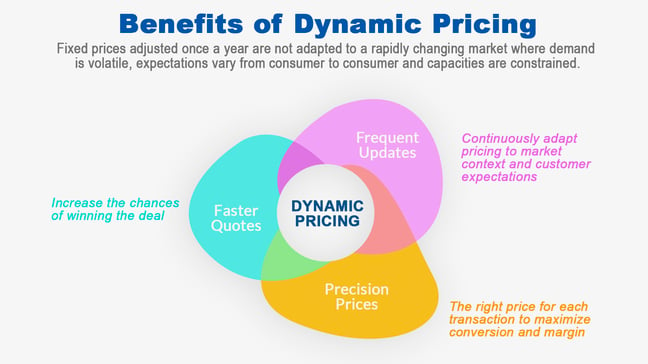
The last three years have taught us that parcel pricing is incredibly unstable and can occasionally even scale up overnight.
Given the spike in delivery volumes, the organic expansion of eCommerce, and the switch from large-pallet deliveries to tiny deliveries to accommodate employees working from home as a result of the pandemic, shipping rates are actually rising more quickly than they have in the previous ten years.
Dynamic Rate Shopping is a feature of IntelliRate that allows you to find the cheapest and best fit rate for every purchase. Using AI we're able to input this rate directly into your shopping cart.
This isn't limited to a single carrier either. It searches through all of your available carriers for each specific zip code to give you the best and most accurate rate.
This not only saves you time but it helps you reduce shipping costs on Shopify. It increases cart conversion because of lower rates. And gives your customer the best shipping experience possible.
This is a powerful tool that can give your brand the cutting edge advantage over competitors.
Shipping big things will cost you and the customer extra. It’s important that you know the correct weight of a package before the carrier scans it as additional fees are charged for an incorrect initial payment. Consider purchasing a postage scale if you print your own labels and ship from home to more accurately estimate expenses, and make sure to choose the appropriate shipping labels. When determining delivery prices, carriers also take the package's dimensions into account.
You will overpay if you use an excessively large box for a lightweight item, because of the extra room the package requires. Larger boxes may result in greater dimensional weight, which will raise the cost of delivery.
Try the following to reduce package weight and dimension:
International shipping appears to be an unavoidable burden that significantly affects shipping costs. Instead, many nations now provide a variety of policies to help clients with their shipments.
Take the case of Canada, where the importers benefit greatly from the North American Free Trade Agreement (NAFTA). Duty drawbacks, on the other hand, appear to be the most sensible strategy to reduce customs costs. The money spent on imported and exported goods might be recouped with the use of duty drawbacks.
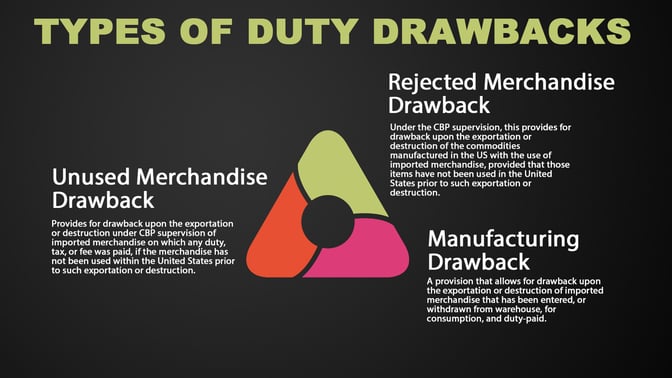
What are duty drawbacks?
A return on duties, taxes, and fees that were paid on imported items that are later exported as either unused or as a finished product, is known as a "Duty Drawback." It may also include products that were damaged as a result of U.S. Control of customs procedures The Customs and Border Protection agency (CBP) developed drawbacks with the goal of lowering costs and encouraging more exports, hence stimulating the economy.
Unused Merchandise Drawback – Provides for drawback upon the exportation or destruction under CBP supervision of imported merchandise on which any duty, tax, or fee was paid, if the merchandise has not been used within the United States prior to such exportation or destruction.
Manufacturing Drawback - Under the CBP supervision, this provides for drawback upon the exportation or destruction of the commodities manufactured in the US with the use of imported merchandise, provided that those items have not been used in the United States prior to such exportation or destruction.
Rejected Merchandise Drawback - a provision that allows for drawback upon the exportation or destruction of imported merchandise that has been entered, or withdrawn from warehouse, for consumption, duty-paid, and which meets the following criteria:
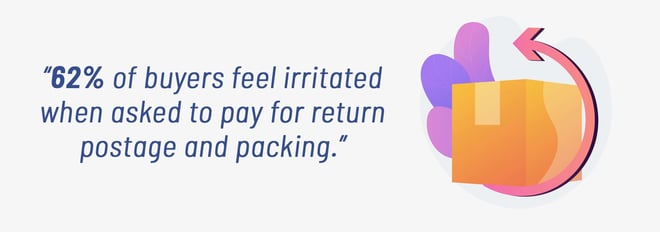
There are a few factors to take into account when deciding whether you or the customer should pay the cost of a return shipment. Both strategies have advantages and disadvantages.
In an effort to reduce costs, brands that charge for return shipping view returns as a cost center. While not untrue, the company you've been watching that does provide free returns thinks completely differently.
Companies that do provide free returns consider it an investment in their connection with customers. They use free returns to lower perceived risk at the time of purchase and see the returns process as an extension of the shopping experience.
Offering free returns is a strategy to increase initial purchases that might otherwise not happen if the business charged a shipping fee for returns. According to a 2015 study, 62% of buyers feel irritated when asked to pay for return postage and packing.
If you do offer free returns, then we highly recommend that you do everything you can to reduce the number of return requests your business gets.
Stay in the loop with the BUKU Blog to learn more about how to build a strong enough customer relationship to lower the number of returned items.
There are so many different methods you can utilize for yourself and your customers.
If you only take one thing away from this article, let it be that controlling the cost of shipping and finding meaningful ways to reduce the price passed on to your customer is your strongest defense against cart abandonment.
Take the time to learn the shipping basics and operate a successful Shopify store. Mastering shipping options cost control, and how to keep a profit while enticing customers to buy from you, is a massive step toward your company's success.
Implement the different methods discussed in this article to reduce the cost of shipping. You may still consider offering your customers free or reduced shipping costs; or it might make more sense to set up default shipping methods to streamline the process.
Understanding and mastering Shopify shipping can seem like a complicated process. However, you will have this process mastered, in no time, by breaking it down into manageable steps.

The supply chain is a term used to describe all the components required to transport goods from beginning to end, from production to the end...

A smart warehouse is a large building where raw materials and other consumer goods are stored using machines, computers, comprehensive software, and...

Direct-to-consumer (DTC) fulfillment is a strategy that helps brands sell and deliver their products directly to customers more efficiently while...